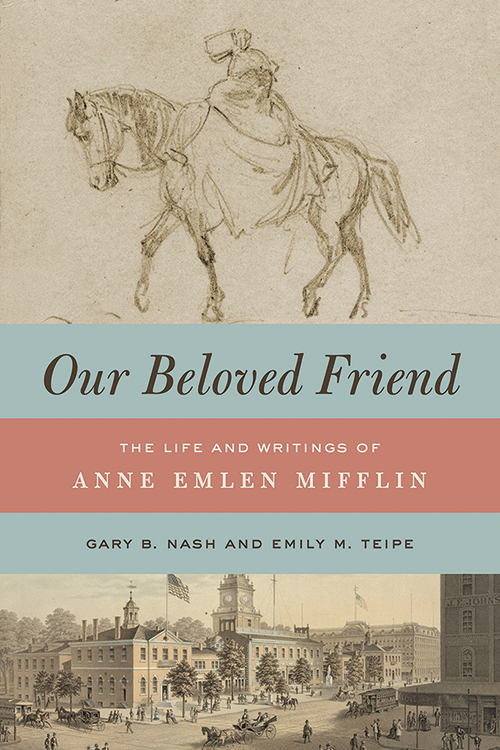
Our Beloved Friend: The Life and Writings of Anne Emlen Mifflin
Reviewed by Larry Ingle
September 1, 2023
By Gary B. Nash and Emily M. Teipe. Penn State University Press, 2022. 370 pages. $124.95/hardcover.
Despite the efforts of its talented authors and editors, the most arresting thing about this book is its price. No, you did not read it above incorrectly; that’s $124.95. For that amount, the buyer gets 138 pages of biography, 84 pages of its subject’s unpublished writings, and 81 pages of her private letters, and 9 pages of pictures of people and scenes relevant to the book. Alas, high sticker prices are fairly common in the world of academic publishing.
The two authors—one of whom, Gary Nash, died in 2021, after producing numerous works related to Pennsylvania and Quaker history—have successfully cast their attention on a little-known but influential public and reforming Friend and traveling minister of the late-eighteenth and early-nineteenth centuries. That she was a woman who married Warner Mifflin (1745–1798), one of the most prominent—even notorious in the political world—Quaker abolitionists of the revolutionary and early Republican periods, gave her added importance. It made her opposition to slavery and support of other reforms a family affair, as she visited Quaker meetings from New England to the Carolinas and west to Ohio.
A determined pacifist, Anne Emlen Mifflin broke with her family and alienated many of her fellow Quakers by her insistence that Friends not use the new, war-stained Continental currency. Thus it required more than a decade after the British pulled out of Philadelphia and her marriage to Mifflin for her new Murderkill Meeting in Delaware to recognize her as a minister. From then on until her death in 1815, her life was taken with travel, visiting, and attending meetings. Authors Nash and Teipe want to demonstrate how indefatigably she undertook to balance the various parts of her life and still be able to act responsibly on her Quaker faith.
The five biographical chapters, which make up the first of three parts, are presented with dates attached to each, but they do not follow a strict chronological order; rather they are topical, bouncing around the timeline of Mifflin’s life. As a result of this structure, some readers might find it difficult to integrate the material coherently. Part 2 shares some of her writings and thoughts on the testimonies, while part 3 shares various correspondence, including letters among Friends and family members.
To sum up: a pretty good book but more than a little overpriced.
Currently co-clerk of Chattanooga (Tenn.) Meeting (with his wife, Becky), Larry Ingle is a historian of Quakerism. He is the author of Nixon’s First Cover-up: The Religious Life of a Quaker President. He is professor emeritus of history at the University of Tennessee–Chattanooga.



Comments on Friendsjournal.org may be used in the Forum of the print magazine and may be edited for length and clarity.